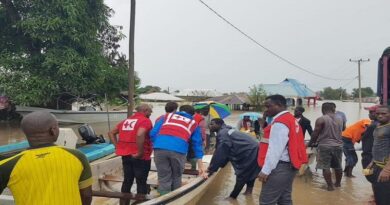Climate disasters are increasingly interconnected- New report
The growing number of climate change-related disasters around the world – ranging from Amazon wildfires to last year’s Texas cold wave – are interconnected and increasingly compounding each other.
This is the key finding of the report Interconnected Disaster Risks 2020/2021, published on Wednesday 8 September 2021 by United Nations University – Institute for Environment and Human Security (UNU-EHS).
The report analyses 10 different disasters from 2020/2021 and finds that even though they occurred in vastly different locations and do not initially appear to have much in common, they are interconnected.
As shown by the key findings of the recent 6th Assessment Report of the UN’s Intergovernmental Panel on Climate Change, each extreme event, such as droughts, fires and floods, are increasingly making each other event worse, most likely as a consequence of human influence.
In 2020/2021, the world witnessed a number of record-breaking disasters: the COVID-19 pandemic spread across the globe, a cold wave crippled the state of Texas, wildfires destroyed almost 5 million acres of Amazon rainforest, and Viet Nam experienced 9 heavy storms in the span of only 7 weeks.
By analysing past events through the lens of interconnectivity, both the disasters that are happening right now and those that will happen in the future can be better understood.
“When people see disasters in the news, they often seem far away,” said UNU-EHS Senior Scientist Dr. Zita Sebesvari, a lead author of the report. “But even disasters that occur thousands of kilometres apart are often related to one another and can have consequences for people living in distant places.”
An example of this is the recent heatwave in the Arctic and cold wave in Texas. In 2020, the Arctic experienced the second-highest air temperatures and second-lowest amount of sea ice cover on record.
The increasing temperature in the Arctic destabilizes the polar vortex, a spinning mass of cold air above the North Pole, allowing colder air to move southward into North America.
Thus, changes in Arctic temperature influence locations far away from the Arctic and likely also contributed to the below-freezing temperatures in Texas, a state that is used to year-round warm weather. Around 4 million people were without electricity as the power grid froze up, and 210 people died.
The new report Interconnected Disaster Risks identifies three root causes that affected most of the events in the analysis: human-induced greenhouse gas emissions, insufficient disaster risk management and undervaluing environmental costs and benefits in decision-making.
Human-induced greenhouse gas emissions were one of the reasons why Texas experienced the freezing temperatures, but they also contribute to the formation of super cyclones such as Amphan, for example – an entirely different disaster in an entirely different part of the world.
The report showcases solutions at both the societal and individual level and explains how one action, such as cutting our greenhouse gas emissions, can affect many different types of disasters: it can prevent a further increase in the frequency and severity of hazards and protect biodiversity and ecosystems.
The ten disasters covered in the report are:
Amazon wildfires – Wildfires fueled by global appetite
Arctic heatwave – Spiraling into a climate disaster
Beirut explosion – When the global community abandons a ship
Central Viet Nam floods – When being prepared is no longer enough
Chinese Paddlefish extinction – The fish that survived the dinosaur extinction but not humankind
COVID-19 pandemic – How a pandemic is showing us the value of biodiversity
Cyclone Amphan – When a cyclone and a pandemic combine
Desert locust outbreak – How manageable risks spin out of control
Great Barrier Reef bleaching – Losing more than a natural wonder
Texas cold wave – A preventable catastrophe?



